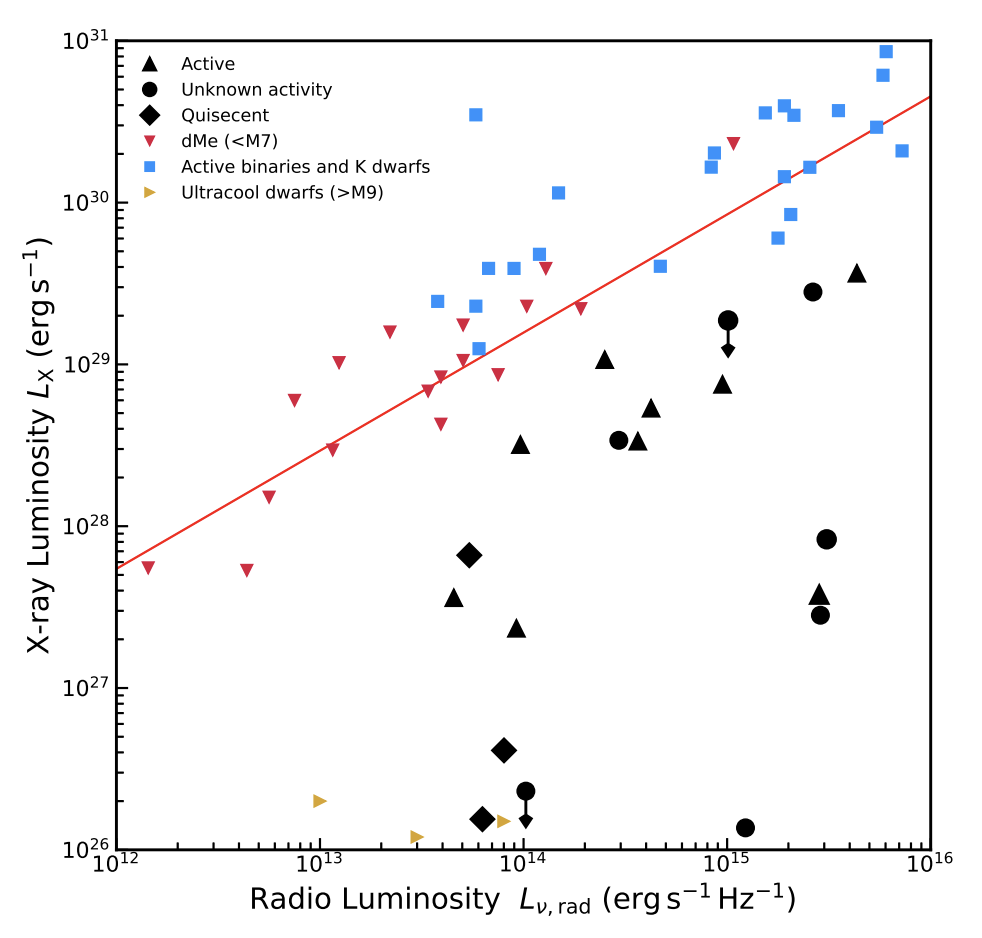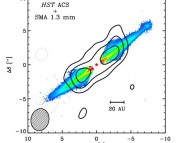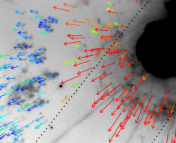Title: The population of M dwarfs observed at low radio frequencies
Authors: J. R. Callingham, H. K. Vedantham, T. W. Shimwell, B. J. S. Pope, I. E. Davis, P. N. Best, M. J. Hardcastle, H. J. A. Rottgering, J. Sabater, C. Tasse, R. J. van Weeren, W. L. Williams, P. Zarka, F. de Gasperin, A. Drabent
First Author’s Institution: Leiden Observatory, Leiden University, Leiden, The Netherlands
Status: Accepted for publication in Nature Astronomy, pre-print available on the arxiv
Today’s authors have observed 19 of our smallest stellar neighbors, not at wavelengths that we can see, but at wavelengths in the radio.
Looking out for the Little Guys
The smallest, coldest, faintest stars on the Main Sequence are called M-dwarfs. Because of their small size, they have low pressures, low fusion rates, low temperatures, and thus low luminosities, which are measures of the total amount of electromagnetic energy per unit time emitted by a star. Though they emit very little electromagnetic energy, the M-dwarfs emit most strongly at near-infrared wavelengths. However, today’s authors have detected emission from 19 of our low-mass neighbors at radio wavelengths using the Low Frequency Array, and they sought to determine the cause of this emission.
As Heard on the Radio
Radio emission lends insight into the goings on that occur on the outermost part of the stellar atmosphere, which is called the stellar corona. These goings on can include large expulsions of plasma and magnetic field, as well as space weather. However, the authors show that the detected radio emission does not seem to be caused by any known coronal or chromospheric activity (Figure 1). Furthermore, data from the Transiting Exoplanet Survey Satellite shows that these stars have limited coronal and chromospheric activity, as well as slow rotation periods and no flares (Pope et al. 2021). The authors were also able to determine that these stars are inactive, meaning that they exhibit little or no magnetic activity, with data from the European Space Agency’s X-Ray Multi-mirror Mission.

Stellar Northern Lights
Instead, today’s authors liken the radio emission they detected from these M-dwarfs to the emission we see from the Jupiter-Io interaction within our own Solar System, which creates the aurorae we see at the Jovian poles. In this interaction, Jupiter’s magnetic field couples Io’s atmosphere to Jupiter’s upper atmosphere by generating an electric current known as the Io flux tube. This current produces an auroral glow at Jupiter’s poles known as the Io footprint, as well as aurorae in Io’s atmosphere. The authors suggest that the radio emission they detected from these M-dwarfs is caused by a star-planet interaction, which is a scaled-up Jupiter-Io interaction, where Jupiter is replaced with an M-dwarf, and Io is replaced with a planet. This means the authors think they are seeing stellar aurorae!
What’s next?
This result is a step towards being able to detect the magnetic fields of exoplanets. We know that the magnetic field on Earth makes it possible for life to exist here, so knowledge of the magnetic fields on planets outside our Solar System tells us a great deal about the habitability of those worlds. The authors hope to follow up their detections with exoplanet hunting missions such as CARMENES and the Habitable Zone Planet Finder to find the planets that are interacting with these M-dwarfs.
If this radio emission is in fact caused by star-planet interactions, then exoplanet scientists could search for planets outside our Solar System using radio telescopes. The authors estimate that a survey with the next-generation Square Kilometre Array could reveal thousands of these systems, and thus thousands of new planets! Soon our skies may be filled with radio planets and stellar northern lights.
Astrobite edited by Jamie Sullivan
Featured image credit: NASA, ESA, and J. Nichols (University of Leicester)




